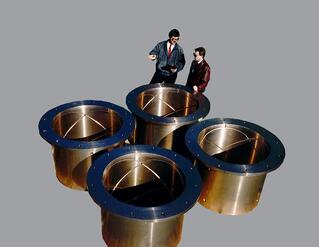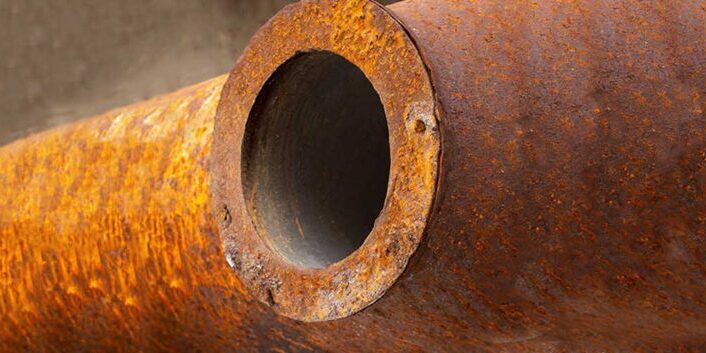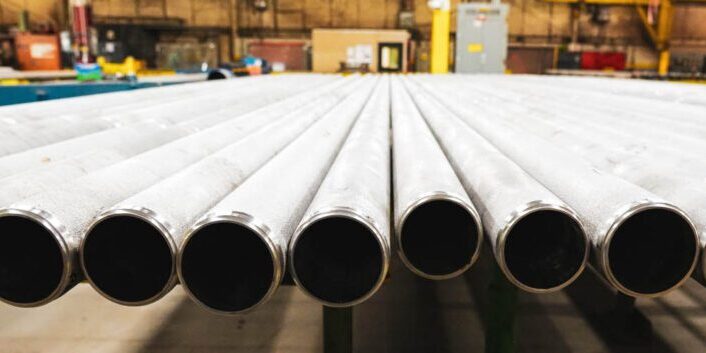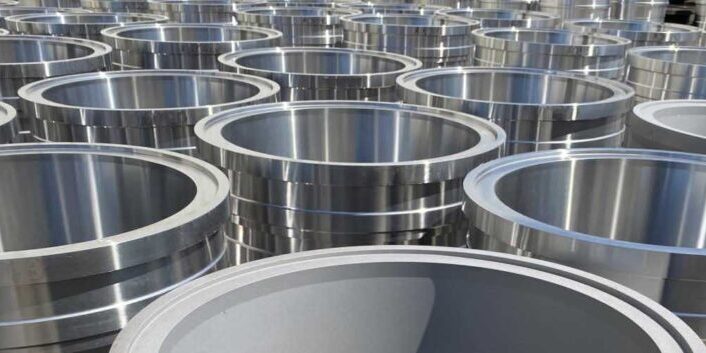Blog It’s Still The Bronze Age
By: Dave Olsen
Metallurgically, Bronze is a copper-based metal alloyed with tin, lead, aluminum or other elements to change the material’s physical or mechanical properties. The historic “Bronze Age” stretched from around 3000 B.C. to about 1000 B.C. Early craftsmen found the material easier to deal with than stone for many uses, and more durable than other materials that they had access to for weapons, utensils, and decorative pieces.

In fact, we still get calls from time to time from customers who want us to cast a bronze art piece – we normally decline those opportunities. But even though MetalTek only casts the occasional bronze statue, we do pour a lot of bronze. And there are good reasons why customers choose it.
Aluminum Bronzes (AB) are widely used for their high corrosion resistance and good mechanical properties. AB alloy C95400 is often used for heavy bushings, gears, pump/valve components and bearings used in chemical, aircraft, and machine tool industries. Nickel is added for improved strength and corrosion resistance. Alloy C95500 is a Nickel Aluminum Bronze (NAB) alloy that is used when high strength (up to 62,000 PSI Yield Strength) is required. Special chemical modification to NAB alloy C95800 makes it especially suited for seawater applications. This alloy is thus successfully used as propeller castings and in seawater piping systems.
Manganese Bronze is also known as “High Strength Brass” and consists of copper, zinc and other alloying elements. Manganese bronze alloy C86300 is often used for its 60,000 PSI minimum yield strength and good bearing properties.
Tin Bronze alloys are used in high-speed gear applications. The high tin content produces a tin rich “Beta” phase that provides excellent wear for gear tooth surfaces. As a contrast, Aluminum Bronze alloys are often used in low-speed, high-load gear applications.
The leaded “Bearing Alloys” are comprised of copper, tin and lead or copper, tin, lead, and zinc. These alloys have the best lubricity and low friction characteristics of the copper base materials.In the microstructure, lead is dispersed as discrete particles surrounded by a copper based alloy. MetalTek’s Bearium alloy is an example of this.
The High Copper alloys are used in demanding thermal and electrical conductivity applications. Alloy C81500 “Chrome Copper” has been successfully used for continuous cast mold lines, for example. “Pure Copper” Alloy C81100 is used in high electrical conductivity applications.
We have come a long way in the 5000 years since the beginning of the bronze age. But the unique combination of properties and value make the copper-based bronze alloys an important family of work-horse materials to this day.



